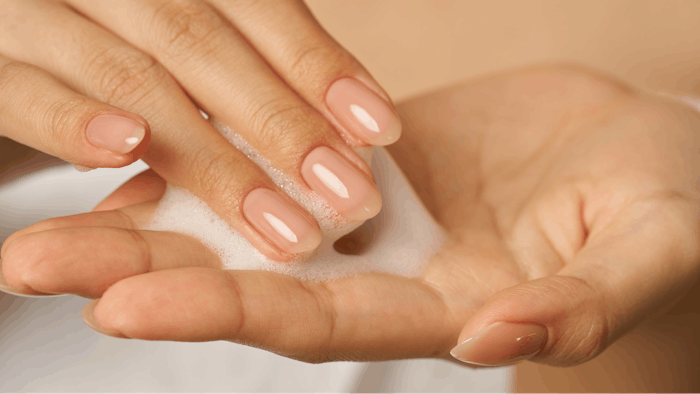
Solid personal care products draw high consumer interest thanks to their waterless form, which can reduce packaging, make storage easier, reduce transportation costs and offer convenience. In addition, liquid personal care products can be difficult to use in terms of controlling dosage and delivering the product.
To overcome these drawbacks, Procter & Gamble (P&G) inventors formulated a solid fibrous shampoo to quickly dissolve into a smooth composition and provide a consumer-acceptable amount of lather. Details are disclosed in patent application WO/2021/262912: Dissolvable solid fibrous articles containing anionic surfactants, published on Dec. 30, 2021, assigned to The Procter & Gamble Co.
See archived: Nourishing 'Hair Block' Bar from Croda
As the company explains, a fibrous article can be made from a filament-forming composition such as a melt that includes at least a polymeric structurant, a surfactant and a volatile liquid solvent, such as water. This composition can be spun via a spinning die into one or more fibrous elements that are then dried to remove the liquid solvent.
To make the process more efficient, rather than increasing the surfactant content or melt temperature, both of which have drawbacks, the company sought to create a melt composition that is phase stable, maintains its rheology and, when hydrated, forms a shampoo that is smooth and creamy.
See related: Formulating on Trend; Shampoo Bar
Specifically disclosed is a dissolvable solid fibrous shampoo comprising, preferably: a) from 35% to 60% w/w on a dry article basis of a polymeric structurant; b) from 45% to 65% w/w of a surfactant system comprising, preferably: i) from 50% to 80% w/w of a surfactant system of a primary anionic surfactant, and ii) from 23% to 50% of a co-surfactant, wherein the surfactant system is substantially free of sulfate-based surfactants; c) from 1% to 3% of a pH adjuster that consists of a monoprotic organic acid dispersed throughout the fibrous elements; and d) wherein the fibrous elements are intertangled or otherwise associated to form the fibrous article.
See the complete disclosure for additional details; patent application accessed on Jan. 10, 2022.










